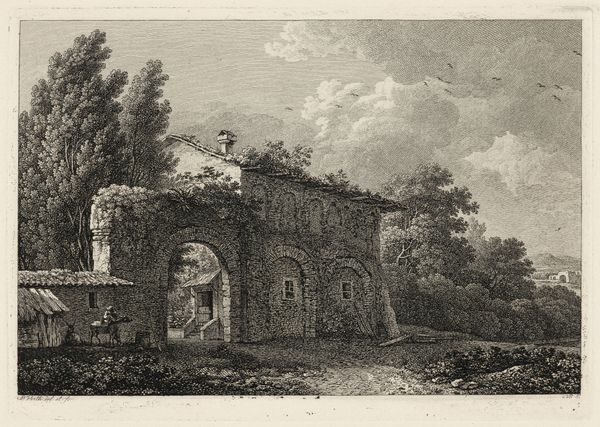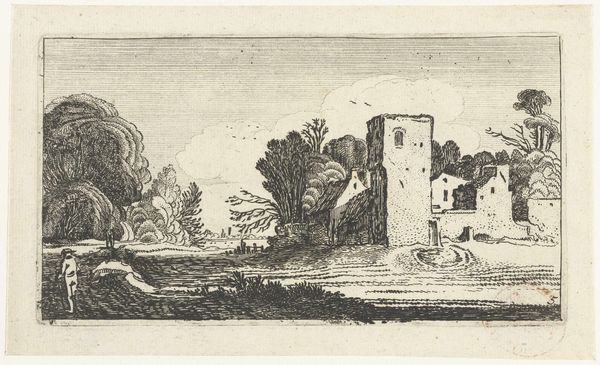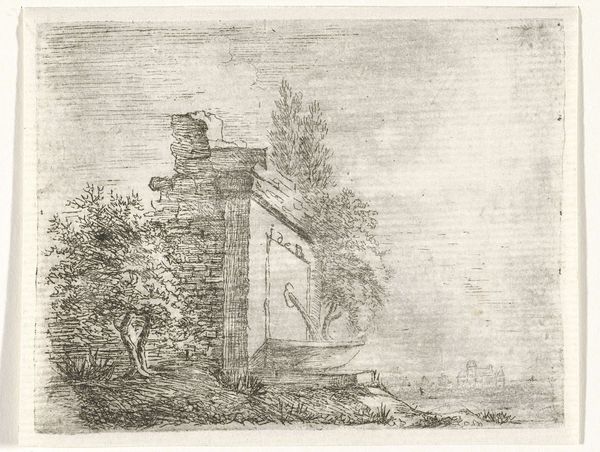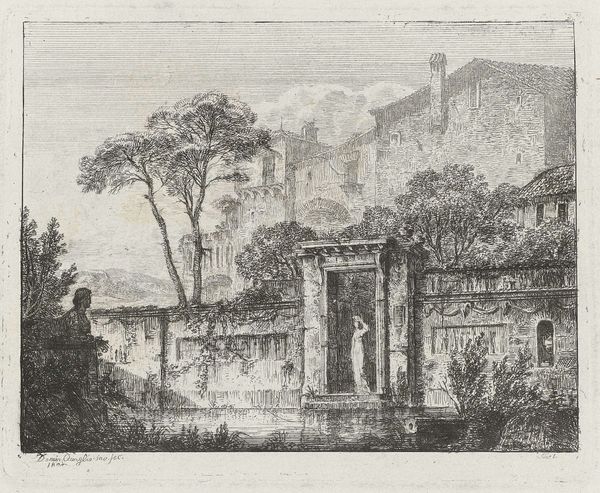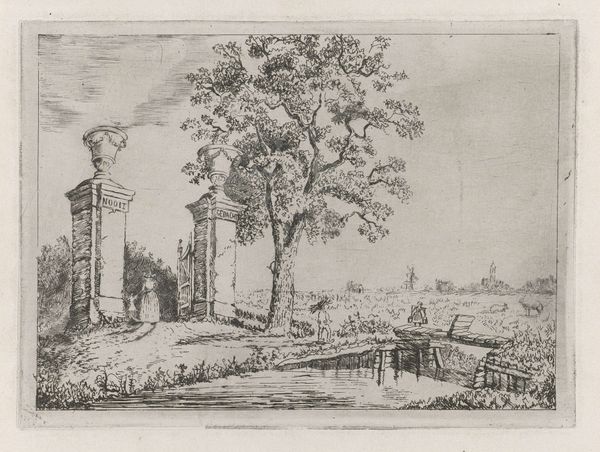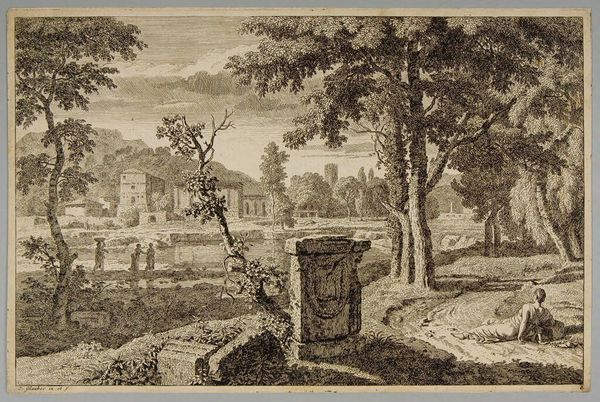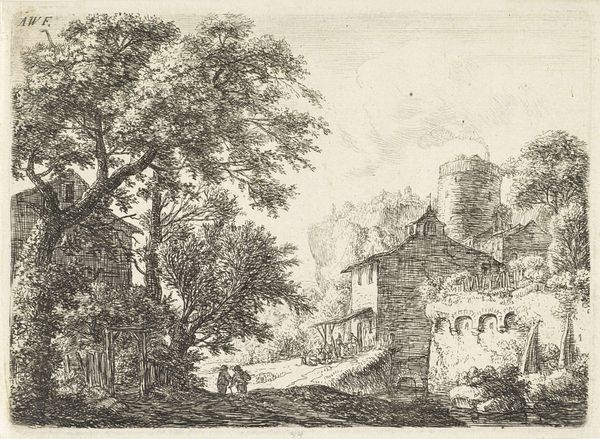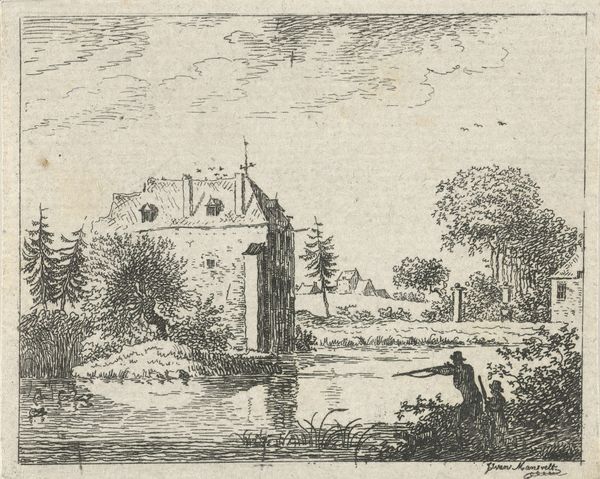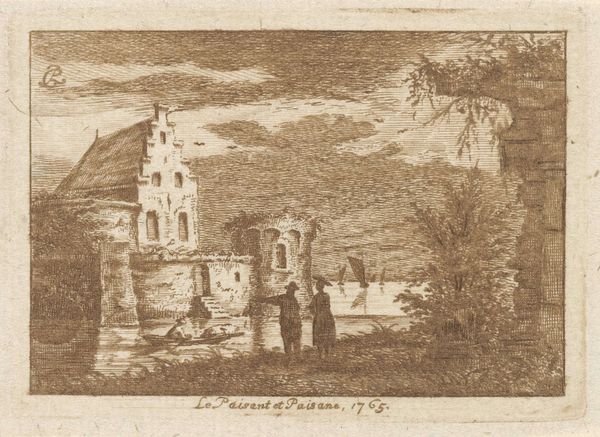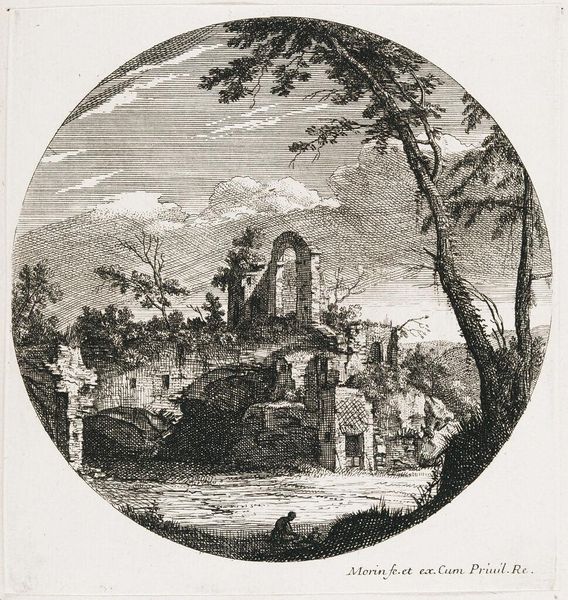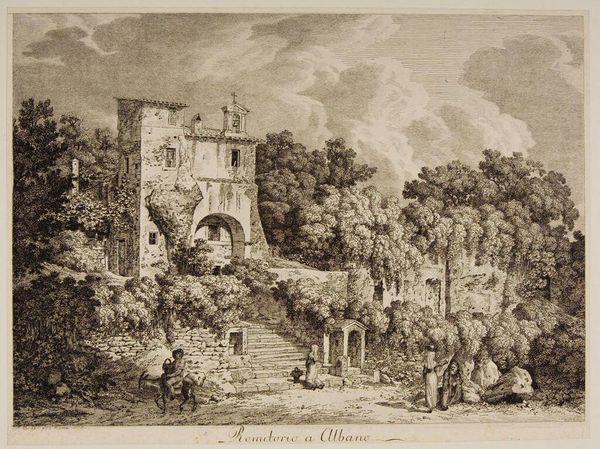
etching
#
neoclacissism
#
etching
#
landscape
#
history-painting
Dimensions: height 98 mm, width 149 mm
Copyright: Rijks Museum: Open Domain
Curator: This etching from 1766 is titled "Landschap met ruïne van Romeinse tempel" or, "Landscape with ruins of Roman temple," by Caspar Jacobsz. Philips, found here at the Rijksmuseum. Editor: The sepia tone lends a beautiful melancholic atmosphere to the work. It really draws the eye to the ruin. Curator: The appeal to ruin as a symbol was very powerful in the neo-classical movement. We're confronted with a meditation on time and the decay of empires. What was once strong and permanent now lies in a state of gentle decline, being reclaimed by nature itself. Editor: Yes, the material reality of this ruined temple really drives that home. Look at the way nature and structure intertwine. Notice that the building materials have changed function. Instead of serving as a symbol of civic authority, stone and brick, reclaimed by root systems, literally house trees. It makes me think about consumption, of how people in the Dutch golden age related to classicism. Were these ruins functioning more as decoration or memento mori? Curator: I agree, the physical process of decay speaks to this directly. This would definitely have resonated with 18th-century sensibilities. These ruins stand as potent symbols reminding us that empires rise and fall. Editor: I think this little scene prompts us to think about more than the symbolic implications of ruined classical antiquity. To my mind, Philips' treatment of materials urges us to investigate how our ways of extracting meaning from these places are produced. Who had the time and leisure to contemplate images like this? What was the relationship between artwork and object at the time? Curator: You make such crucial points about the socioeconomic realities encoded here. Viewing through that lens enhances the sense of shared history—even though each viewer interprets and projects onto it differently. Editor: It's interesting to view this etching as something beyond aesthetic pleasure. To understand its status as a symbolic object produced in and marked by time expands our own understanding.
Comments
No comments
Be the first to comment and join the conversation on the ultimate creative platform.
